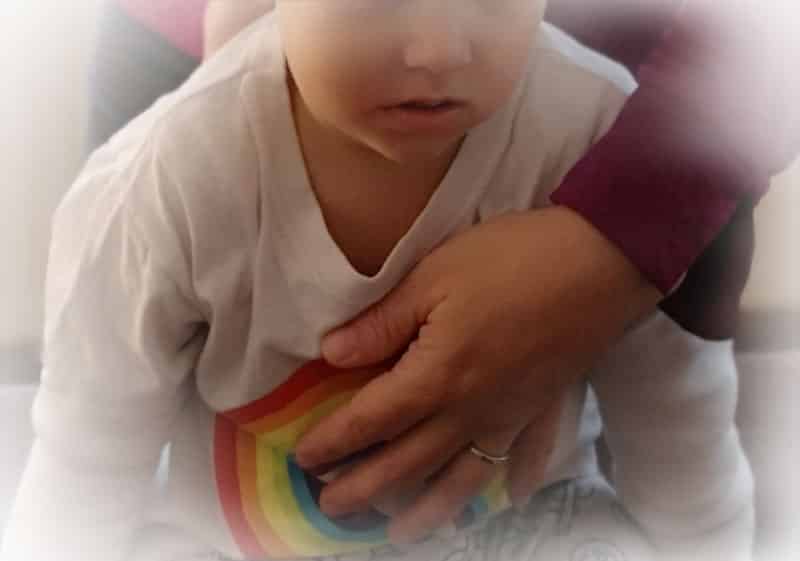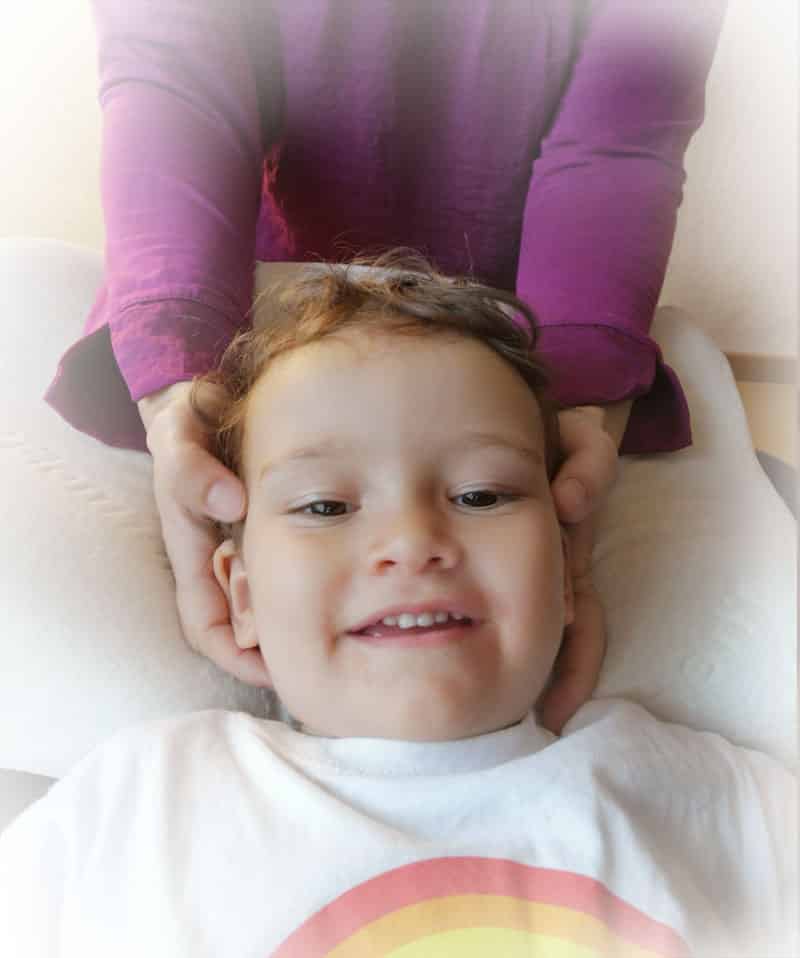Osteopathy encompasses a variety of treatment forms, from the gentler craniosacral technique to the more involved adjusting manoeuvre. The technique used for each treatment depends solely on the needs of the patient on the day of the treatment.
Osteopathy Treatment
Parietal Osteopathy
Structural osteopathy deals with the blocks in the connective tissue. This technique can resolve blockages in the joints, alleviate the tension caused from hardened muscles and loosen fascias. The treatment therefore aims (regardless of whether a visceral or craniosacral technique is used) to restore the tissues and assist in improved blood circulation. After a successful treatment, the body will be in the position to once again self-regulate. As a result, it will be easier for nutrients and oxygen to reach the tissues and the waste can be expelled more efficiently from the body.
Structural osteopathy can be used to treat the whole body. Back pain could be triggered by a twisted ankle. Neck pain could stem from a pelvis tilt or pressure in the jaw could manifest in the lower back.
For this reason, the treatment can also be focused in areas where the patient is not necessarily in pain.
After the treatment, it is recommended that the patient stays away from any strenuous activity. Normal mobility is, of course, not an issue, however any strenuous bodily activity or prolonged periods of immobility should be avoided.

Visceral Osteopathy
Visceral osteopathy is used to resolve tension in or around the organs.
The organs influence the body‘s functions. As a result, complaints relating to back pain could be relating to intestinal issues. Operations and scars are also very interesting from an osteopathy point of view as osteopathic techniques, executed with precision, can alleviate or resolve these pressures. This type of treatment offers one more dimension to the osteopath. It should never be forgotten that the human body consists not only of a back but also of a front!
Craniosacral Osteopathy
This is the gentlest form of osteopathy and is more often than not used for babies and children. However, it is also used for adults as it works in an efficient and in-depth manner. This form was developed in the first 30 years of the 20th century.
By applying gentle pressure in the tissues, the pulsations in the brain’s grey matter and spinal cord’s fluid can be located and improved.
Craniosacral Osteopathy can be used to treat the whole body. It focuses mainly on the cranium, the skull and the sacrum, wherefrom it also derives its name.
This form of treatment when applied to a patient could bring to the surface tissue tensions. Usually people are not aware of these tensions as there are not necessary for our usual movements and they are hidden by our nervous system. During the treatment these tensions are brought to the surface and can, now, be recognised.
The release of these tissues by the osteopath creates a feeling of deep relaxation and realignment in the body.
The treatment of babies and children
The craniosacral technique is particularly used for babies and children as they respond very quickly to it and it is a very gentle form of treatment.
The influence of gravity which triggers many chain reaction blockages in adults, is not yet well established in a child’s body. A child’s body consists mainly of cartilage, as opposed to bone. Due to this they can react very quickly to the treatment.
The process of birth and the last few months of pregnancy always impose a significant amount of strain on infants. When the birth process has been a difficult one, this strain is particularly noticeable as it happens, for example, with ventouse births, caesarean sections or problems with the umbilical cord.
As with all osteopathic treatments, before a diagnosis is reached a thorough medical history is taken and an examination is carried out. Blockages and tissue pressure can be resolved using only a gentle treatment.
The treatment complies with the individual needs of the child. That means in practice, that bigger children can play or read during the treatment whereas younger children and babies can be fed or breastfed. Sometimes the entire treatment can take place with the child in the arms of their parents.
Releasing these blockages can be a very intense experience for the children as, despite the fact that it is gentle, it can have a deep effect on them. Due to this, the well-being of the child is always in the foreground of the treatment. In the 24 hours following a treatment some children can sleep quite a lot and others are a bit more unsettled than usual. However, these reactions subside after the first days.

Osteopathic treatment for pregnant women
All through pregnancy and during the birth process the body’s mobility is very important not only for the mother but also for the child.
In our Cologne Practice we place particular focus on pregnant women while working closely with the midwives in charge.
During pregnancy many medications or alternative ways to alleviate pain are contraindicated. Nevertheless, osteopathy can be of help as, principally, all osteopathic techniques can be used during pregnancy, albeit some in a slightly altered form.
Good mobility of the pelvis is extremely important for the birth. The pelvic floor and hip muscles need to have a good muscle tone so that they can open in an optimal way during pregnancy. Osteopathy offers a gentle treatment method of releasing blockages and helping the tissues to cope with the constant changes in pregnancy.
During pregnancy the body works very hard. The centre of gravity shifts with the growing child and the ligaments and joints become looser. The volume of blood increases. The pregnant woman sometimes needs support so that tensions do not build up too quickly and can be resolved while all these changes are going on.
Your first osteopathic treatment
It is recommended that during your treatment you wear tight-fitting clothes in which you can move with ease (for example leggings and spaghetti tops). Initially a full detailed medical history will be taken, followed by a mobility examination to the spine and joints. In circumstances were it is deemed necessary a neurological exam or a blood pressure measurement can be conducted. Afterwards the osteopath is in a position to reach an informed diagnosis.
The treatment takes places sitting or lying down
Nothing should feel painful or uncomfortable during the treatment. You are always welcome to provide us with feedback or ask us further questions. During the treatment it is normal that you feel some pressure, as you would be feeling during a massage session, or some more general tissue tension. Nevertheless there should not be any pain. More is definitely not more here!
The treatment continues to have an effect for the following 24 hours and as such you might feel some soreness in the muscles or a feeling of deep relaxation.
It is important that after the treatment you drink a lot of water and remain active or rest and do what your body demands of you, in order to support the process triggered by osteopathy.
Costs of treatment and payment
Osteopathy is a private service.
After every treatment the patient receives a bill which can be paid in cash or by card. These receipts can be handed to your health insurance so that you might receive a portion of the payment back. We strongly recommend that you contact your health insurance prior to booking the appointment and enquire whether osteopathy is covered by them and what percentage they would be refunding you. The Gesetzliche Krankenversicherung (GKV) asks that you receive a medical referral for osteopathy. These can be obtained from your GP (Hausarzt), Orthopaedic surgeon or dentist or, even, any other medical doctor.
The private health insurances usually reimburse the entire cost of the treatment.
All the osteopaths in our practice have obtained the Heilpraktiker license and are members of an osteopathic organisation. This means that they fulfil the criteria set out by the health insurers in order to agree to a full or partial refund of the treatment.
Disclaimer
Please note that for legal reasons we would like to point out that we cannot make promises of healing. Osteopathy cannot help in all cases and does not claim to do so. Osteopathy optimises the state of the body, so that the body can solve tensions better. In many cases, however, osteopathy offers treating solutions that other therapies cannot provide.
